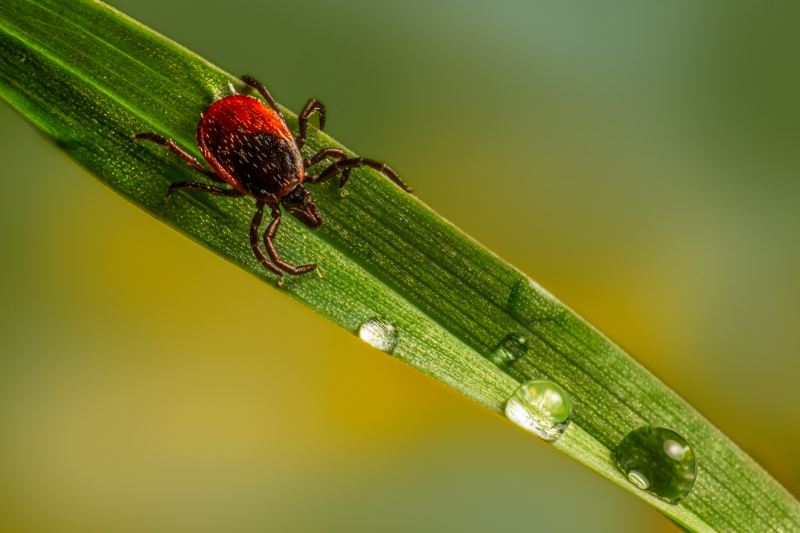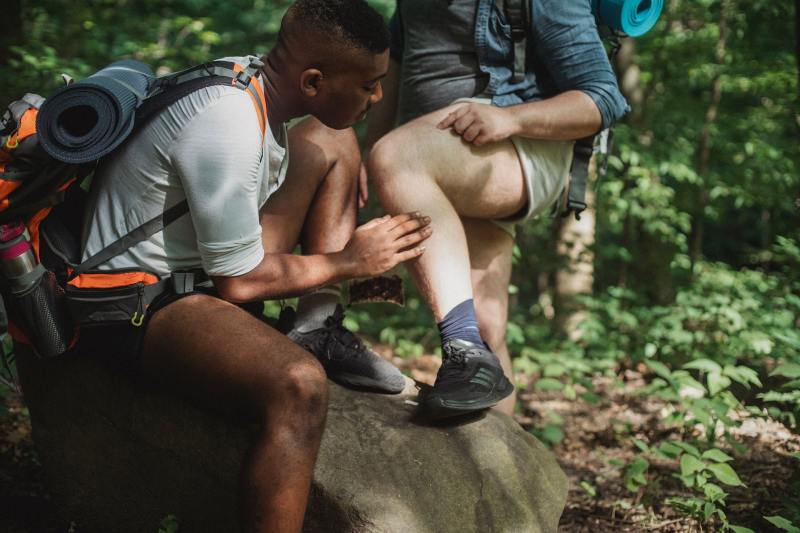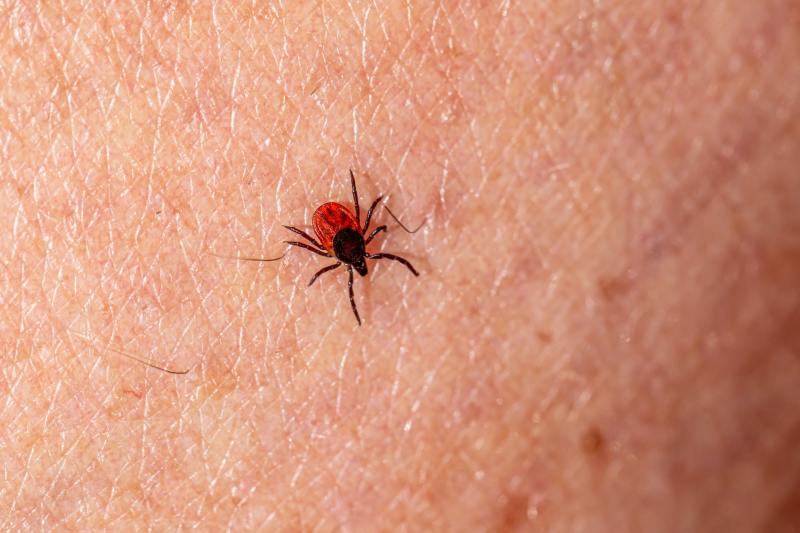
Of all the various animals living on the trail, one of the most potentially harmful can be barely bigger than a pinhead. Knowing how to avoid ticks while hiking should be part of any hiker and camper’s skillset. That’s because ticks — most commonly the deer tick and larger dog tick — carry the bacterium Borrelia burgdorferi, which causes Lyme disease. You can also catch other tick-borne illnesses from a tick bite – Elrichosis and Rocky Mountain spotted fever, among others.
It’s an unfortunate truth that no matter how hard you try, these tiny insects may still find their way to your skin and latch onto you. You often won’t notice until you’re home and off the trail, so you should perform regular tick checks on yourself and others, removing as many ticks as you find. Most ticks are perfectly safe and can be removed and disposed of. But it’s better to play it safe on the trail, so here’s our guide for avoiding ticks, as well as how to remove ticks if you do get bitten.

How to avoid ticks
This might be oversimplifying things, but the best way to avoid a tick bite is to avoid ticks altogether. Ticks are more commonly found in overgrown grassy and bushy areas or woodland. If your chosen hike has a lot of long grass — especially in deer territory — or bushy forests, you’re more likely to come into contact with ticks. Sticking to rocky trails reduces the likelihood that a tick will latch on.
Use bug spray
If tick territory is an unavoidable part of your trial, you can use bug spray to repel them. Be especially vigilant with applying repellant from the waist down since you’re more likely to brush against a tick with your legs. If you prefer all-natural bug spray, lemon eucalyptus oil is a decently effective, chemical-free option for repelling insects. However, no bug repellent works better than chemical repellents with at least 80% DEET. These are most effective at keeping mosquitoes, ticks, and other bugs away.
Prepare your clothes before your adventure
You can also treat your clothes with permethrin. This bug repellant will stay on your clothes for six weeks or through six washes, whichever comes first. To treat your clothes, hang them so they’re hanging flat and thoroughly coat them in permethrin. Allow them to dry before wearing.
Cover up
Cover more of your skin to avoid giving those ticks something to latch onto. Wear long pants and a long sleeve shirt. If you know you’re in an area with lots of ticks, tuck your pants into your socks and your shirt into your pants. You may feel like your dad, but it’s better than Lyme disease. Light-colored clothing makes it easier to spot a tick that makes it onto your clothes, but some evidence suggests they are less attracted to light clothing.

How to remove a tick safely
After your hike, double-check your clothing, gear, pets, and backpack for ticks. It’s easiest to do a thorough tick inspection on yourself in the shower, but if you’re out on an overnight hike or camp, you may have to check one another. Ticks can latch on anywhere but prefer warm, damp areas. Pay special attention to searching around your armpits and groin, as these are popular hangouts for ticks.
Although pulling a tick out with your fingers or tweezers can be tempting, this can — look away if you’re squeamish — squeeze the innards of the tick into your body. Doing this can increase the likelihood of developing Lyme or other diseases. Instead, use fine-nosed tweezers, tick tweezers, or a tick twister, and grasp the tick as close to your skin as possible. Lift firmly until you feel the tick detach from your skin.
You can also buy over-the-counter tick spray if you have access to a pharmacy. This freezes the tick in place, and after a few minutes, you can brush the tick off your skin. Clean the area with an alcohol wipe or disinfectant once the tick has been safely removed.
Don’t forget to check your furry friends if you’ve been walking your dog on the trail, too. Though dog ticks can latch onto humans, we more commonly find deer ticks on ourselves. Dog ticks are lighter in color and generally far larger, so they are easy to spot. You can remove these in the same way as you would from yourself, but you may need a hand holding your dog still as you do so.

Should you be concerned about ticks?
While you should be cautious and aware of ticks, there’s no need for alarm. Most ticks don’t have Lyme, and even those that do often won’t spread it to you — I’ve had hundreds of ticks and have still tested negative for Lyme disease. In the weeks following a tick bite, look out for the following and contact your doctor if you have any concerns:
- A bullseye-style ring around the bite
- Rashes or inflammation
- Fever and joint aches
It can be a good idea to retain the tick in a sealed bag — perhaps stored in the freezer — to get it tested if you develop any of these symptoms. If you’ve come back off a particularly tick-heavy trip, the chances of you storing tens to hundreds of ticks just in case is limited, though, so don’t feel as though you have to store every tick that decides you look like a passing meal.
Editors' Recommendations
- Camper van vs Class B RV: How to choose which to buy for your outdoor adventures
- Dust off your gear, it’s time to hit the trail: The spring hiking tips you need
- These are the essential outdoor knots every outdoorsman should know
- 3 lesser-known tips that can save your life on the trail
- Get the best camping axes for cutting, chopping, and prepping your way around the campsite




